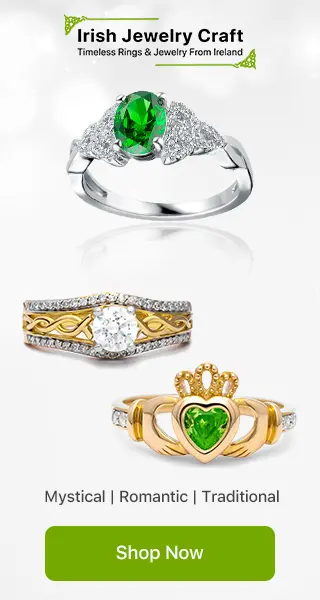For most people when they hear the word ‘Claddagh’ they immediately think of beautiful and ornate Celtic jewellery. Claddagh rings along with earrings, pendants, and bracelets have grown in popularity to become one of the most sought-after subcategories of Irish jewellery across the world.
What many people don’t know is that Claddagh is a fishing village located just outside of Galway City and has one of the richest and compelling histories of any local community in Ireland. In this article we are going to explore the village of Claddagh, its unique heritage, and the links between this tiny village and one of Celtic jewellery’s most famed successes.
A Closer Look at Claddagh Village
Claddagh is believed to be the oldest fishing village in the Emerald Isle. Located where the River Corrib meets Galway Bay, this rural community takes its name from the Irish word ‘Cladach’ which translates in English to ‘the shore’.
In the 13th century, a wall was erected around Galway City by the Anglo-Normans that separated the people of Claddagh from the ‘City of Tribes’. This enforced separation encouraged the residents of Claddagh to become an extremely independent and close-knit community that maintained its own language, embraced and lived by their own traditions, and prospered without the help of others.
Fishing was the name of the game in Claddagh. The men of the village worked as fisherman and enjoyed the sole rights to all the fish in Galway Bay, which unsurprisingly was quite a lucrative effort come market day. Historians and Celtic scholars believe that by the turn of the 19th century there was over 800 fishermen operating approximately 80 boats in that area alone.
At one point the thriving village of Claddagh was home to over 500 families. It was an outbreak of Tuberculosis couples with the deconstruction of the medieval wall that encircled Galway City and the merging of communities that saw these numbers dwindle. Today Claddagh exists in the more compact form of a church, a small primary school, and a handful of brightly painted houses.
Claddagh’s Roots in Irish Jewellery
It will come as no surprise to anyone that the creator of the Claddagh ring symbol was a resident of Claddagh village. This iconic symbol has become synonymous with the modern brand of Irish and Celtic jewellery. Claddagh consists of three different elements intertwined to form one of the most beautiful and celebrated symbols in Irish culture.
Claddagh combines the image of a heart held in place with a pair of hands and a crown sitting atop it. These three components interact with each other and combine to represent love, loyalty, and friendship.
Over the years, wearers of Claddagh rings have opted in to the tradition of wearing the piece ‘upside down’ on their left hand if they are married, or with the heart facing out on the right hand if they are single.
Claddagh rings have also been an Irish wedding tradition for centuries. Traditionally the rings are placed on the bride and groom’s wrists again with the heart facing inwards towards the heart of the wearer. Some brides opt for a Claddagh pendant or bracelet instead of the more traditional ring.
We hope you enjoyed this deep dive into a small rural village in the west of Ireland that not only embraced tradition but created a few of its own with its heavy links to Irish jewellery.


